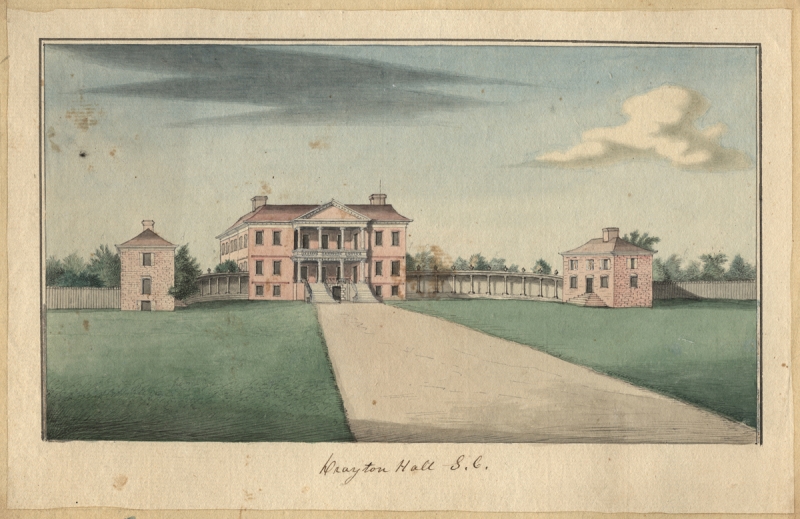First on Facebook – June 11, 2021
Part I of IIIRichard (Moby) Marks, preservation contractor, explains Drayton Hall construction in the mid-1700s:If visitors could see the finer points of construction, they’d understand how Drayton Hall is a high style, Georgian edifice. The regularity of the brickwork, the fine butter joints at each end of a brick, the tight lines of mortar between bricks, and the shaped and rubbed bricks in the jack arches of the windows and around the doors, all represent the highest form of construction in that era. The fine alignment of the Flemish bond brickwork is unparalleled. A mason today would have a hard time replicating all the techniques seen here.If visitors could glimpse the original framing, they’d see great craftsmanship and the close attention to detail and joinery. Since everything was sawn by hand, they could see the patterns in the wood that particular kind of saw made. They could learn that blacksmiths wrought every nail, that hand planes shaped every piece of molding, and that joiners mortised and tenoned the doors and windows. Thousands and thousands of wood joinery make up this building.Could visitors imagine how much effort went into felling the trees, hauling and sawing it, and molding it? What about getting the clay, winnowing it, putting it in molds to shape it into bricks, firing it, and storing and then hauling it to the building site?An advantage for visitors is that much of this work was done in an area of about a half a mile in radius around the building, so a visitor of the 18th century, if we can get today’s visitors to time travel, would probably have seen the work sites.Could visitors today imagine what a feat it was to take all of those raw materials and transform them by hand into what we see today as this grand building?Excerpt from my “Drayton Hall: A Place and Its People,” due out this fall 2021.
Preview my new book “Drayton Hall Stories: A Place and Its People”
 George W. McDaniel, Ph.D., is President of McDaniel Consulting, LLC, a strategy firm that helps organizations use history to build bridges within itself and to its broader constituents. The company’s tag line, “Building Bridges through History,” is grounded in McDaniel’s personal beliefs and his experience in site management, preservation, education, board development, fundraising, and community outreach. Rather than using history to divide us, he strives to help organizations use history, especially local history, to enhance cross-cultural understanding and to support local museums, preservation, and education. Dr. McDaniel led volunteer efforts with Emanuel AME Church and historical organizations in Charleston to use historic preservation to enhance racial reconciliation and healing. McDaniel is also the Executive Director Emeritus of Drayton Hall, a historic site in Charleston, SC, owned by the National Trust for Historic Preservation. He retired from Drayton Hall in 2015 after 25 years of distinguished service.
George W. McDaniel, Ph.D., is President of McDaniel Consulting, LLC, a strategy firm that helps organizations use history to build bridges within itself and to its broader constituents. The company’s tag line, “Building Bridges through History,” is grounded in McDaniel’s personal beliefs and his experience in site management, preservation, education, board development, fundraising, and community outreach. Rather than using history to divide us, he strives to help organizations use history, especially local history, to enhance cross-cultural understanding and to support local museums, preservation, and education. Dr. McDaniel led volunteer efforts with Emanuel AME Church and historical organizations in Charleston to use historic preservation to enhance racial reconciliation and healing. McDaniel is also the Executive Director Emeritus of Drayton Hall, a historic site in Charleston, SC, owned by the National Trust for Historic Preservation. He retired from Drayton Hall in 2015 after 25 years of distinguished service.
A frequent writer, speaker, and facilitator about such issues, he can be reached at gmcdaniel4444@gmail.com or through his website at www.mcdanielconsulting.net.
All images courtesy of the author unless otherwise noted.

 McDaniel Consulting LLC is a strategy firm that helps organizations use history to build bridges within itself and its broader constituents.
McDaniel Consulting LLC is a strategy firm that helps organizations use history to build bridges within itself and its broader constituents.